Work Packages - SAMCoT

- SAMCoT's research is structured in 5 different Work Packages -
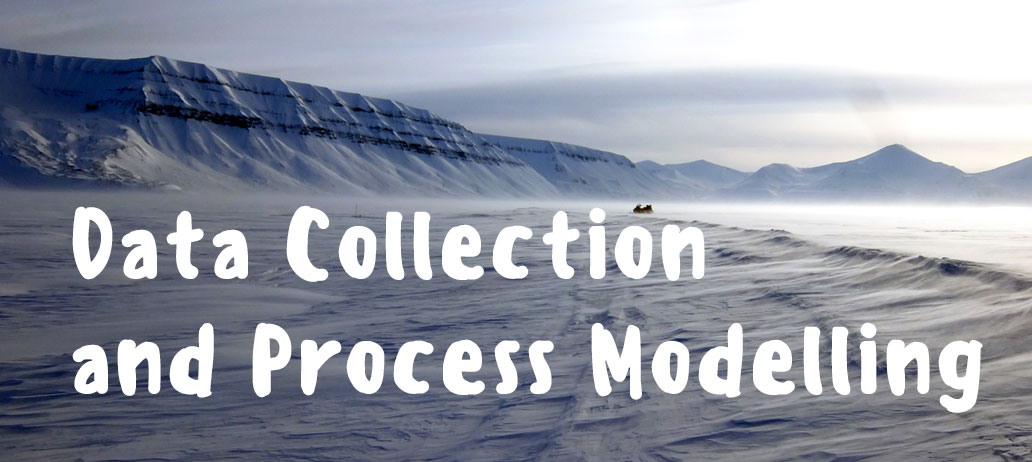
More than 20 years of extensive experimental investigations on Svalbard, the Barents and Kara Seas regions backup the work done by this Work Package. Numerous researchers, MSc and PhD students, work together with the aim of providing the experimental basis for PhD students over the years. Field studies in the regions of the Russian Arctic are also carried out within the cooperation Moscow State University (MSU) and Krylov State Research Centre.
The researchers main goal is to collect and analyze field data on sea ice, icebergs, and coastal permafrost working with this data on the necessary models for further research.
Contact
Aleksey Marchenko (WPL)
Aleksey Shestov (WPDL)
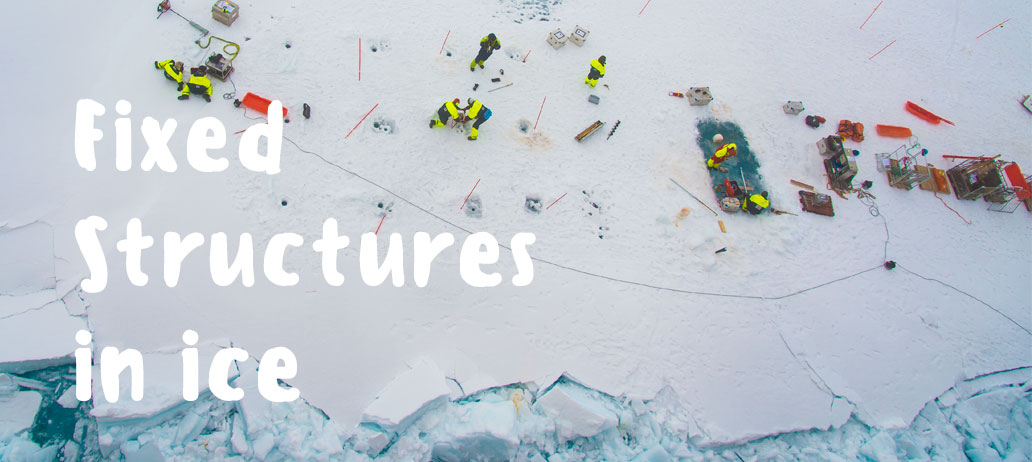
SAMCoT's Industry Partners need analytical and numerical models to predict the action from ice (first- and multi-year, level ice and ridges) on fixed single and multi leg structures, and to further to develop innovative vibration mitigation measures. SAMCoT researchers within Fixed Structures in Ice, are reaching through their work a better understanding of how to address ice-structure interaction in many practically relevant situations.
This in time will help predict ice loads with a desired accuracy, models have to be developed that account for the effects of ice-structure interaction for the predicted failure mechanisms in ice. Other gaps that SAMCoT researchers are currently focusing on are: the representation of multi-year ridges and ice in model-scale with respect to size, shape and mechanical properties and reaching some understanding of how to address ice failure against a vibrating structure; in particular, the synchronization of ice failure is not clear.
Contact
Knut Høyland
Andrei Metrikine
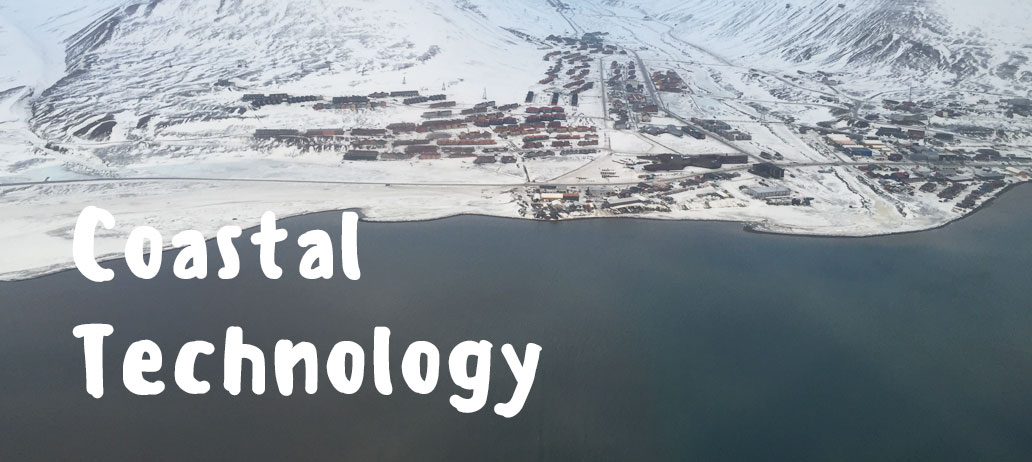
Uncountable climate scenarios predict a changing climate in the Arctic. Observations over the last decades show that the climate change occurs more rapidly in polar zones than in temperate zones. The consequences of climate change include an increase in temperature, melting ice shields, changed movement patterns of icebergs, increased coastal erosion due to the lack of sea ice, increased river and shore erosion, intensified wave dynamics and loads, increased storm intensity and frequency, and melting permafrost.
All these factors are likely to influence the performance of existing infrastructure and will cause huge damages on coastal structures. Relocation of buildings might be necessary due to the melting permafrost and the increased threat for landslides, avalanches, and floods. If the warming trend continues, enormous costs for design, maintenance and rehabilitation of infrastructure will occur. The effects of a changing climate within the next few decades must be considered in the design of new constructions. In addition to the harsh environment, the lack of sufficient local building material poses another challenge to the building and construction sector. Innovative methods which enable the construction to use local material for building and erosion protection measures have to be developed. Since the Arctic environment is extremely sensitive, all "imported" material must be chosen carefully and tested before using.
Detailed knowledge about the environment, the ecologically friendly handling of natural resources, and sustainable building is required. Comprehensive research is the foundation for an economical and considerate exploitation of the Arctic.
Contact
Raed Lubbad
Anatoly Sinitsyn (WPDL)
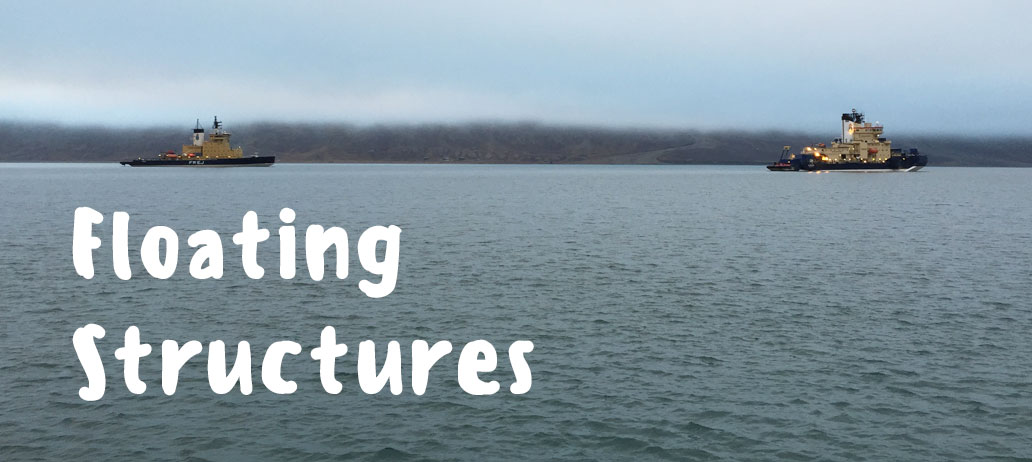
SAMCoT's researchers within Floating Structures in Ice aim to reach a proper understanding of the difference between moored structures and fixed structures in ice with respect to ice failure mechanisms, or the loads and parameters that affect the dynamics of the coupled system. SAMCoT works to provide numerical models that properly predict the behaviour of moored structures in ice and properly address the effects of moored ice on such structure. Another key goal is to improve methods for assessment of the resistance to penetration of the inner hull of ships and floating platforms subjected to iceberg impacts, accounting for local ice pressure redistribution during major structural damage.
The final aim is provide SAMCoT Industry Partners with new knowledge, analytical and numerical models to improve the prediction of loads exerted by first-year and multi-year level ice and ridges as well as icebergs on floating structures. This also implies prediction of the behaviour and performance of the structures.
Contact
Sveinung Løset (WPL)
Jørgen Amdahl (WPDL)
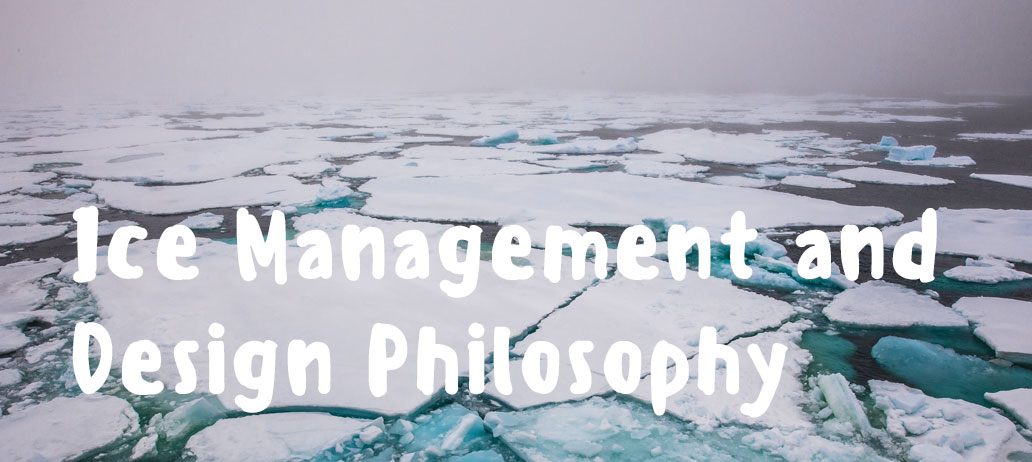
Ice Management is defined as the sum of all activities in which the objective is to reduce or avoid actions from any kind of ice features. In order to incorporate such activities in the design, there is a need for a framework that allows proper design documentation pertaining to the safety of the Arctic offshore structures supported by ice management operations.
This Research Area aims to establish a philosophy that ensures that the Ultimate Limit State (ULS) and Accidental Limit State (ALS) requirements are fulfilled by Arctic offshore structures without being overly conservative. The work done by SAMCoT researchers considers the use of ice management means such as icebreakers, iceberg towing vessels, structure disconnection and reconnection capabilities, and a sophisticated ice surveillance system for online situational awareness of the ice management process. Also our researchers work on quantifiying the efficiency of ice surveillance such us detection, tracking and forecasting.
